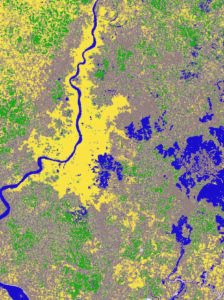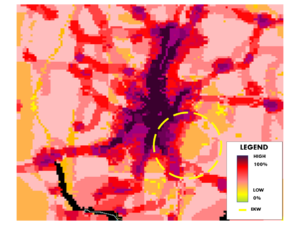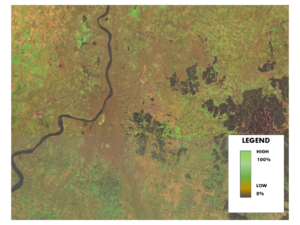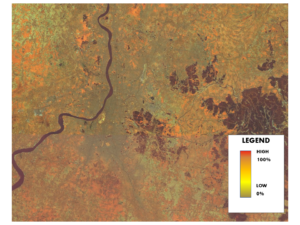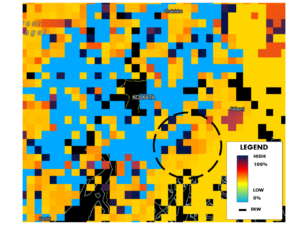by Subrajoti Paul 12 April 2021
According to you what is the most important component that makes up the environment? Trees, forest, rivers, watershed, etc? surprisingly it’s the most neglected of them all, Wetlands. Wetlands delivers more amount of ecosystem services than even rain forest and they are present in every part of the world protecting coastal areas from flooding, absorbs pollutants, improves water quality and maintains biodiversity especially of rare and essential migratory birds. The water-saturated landmasses of wetland mostly consist of marshy and boggy features, situated along the river basin these become a primary target for developers for construction projects through encroachment as their cost is low and ownership rights unclear. They are neglected by local residence due to their unpleasant appearance as most of them misinterpret them to be ‘nallas’ and waste dumping spot. The Convention of Wetlands which took place in the Iranian city of Ramsar on 2nd February 1971 marked the formal adoption of wetlands as an integral part of environmental conservation. This year of 2021 commemorates the 50th anniversary of the convention on the occasion of World Wetland Day. Minister of State for Environment, Forest and Climate Change announced the establishment of a Centre for Wetland Conservation and Management (CWCM) as a part of the National Centre for Sustainable Coastal Management (NCSCM). This means that research needs and knowledge gaps will aid through the application of an integrated approach of conservation along with building a network with national and international agencies which will facilitate proper policy design and implementation.
Wetland as Kidneys of a city
The city of Kolkata, is the capital of the eastern state of West Bengal, having a population of forty-five lakhs with an additional burden of another 6 million floating day-time population according to Census 2011, is generating 1,112 million litres of sewage per day and facing the challenge of managing, disposing and treating wastewater. But the city has be blessed with system of natural wastewater treatment that allows the megapolis to grow and prosper which also gives it the title of “Kidneys of Kolkata”. The East Kolkata Wetlands (EKW) (220 27’ N 880 27’ E), located on the eastern fringes of Kolkata city bordering the Salt Lake Township on the one hand and the new township at Rajarhat on the other, forms one of the largest assemblages of sewage fed fish ponds distributed across the districts of South and North 24 Parganas. The process of land formation in this region has largely been influenced through centuries by the Ganges river system where upland and tidal depositions continue to create land. The tributaries and distributaries of the river were active in this area many years ago. Before the establishment of Calcutta, the salt-water lake formed here was a backwater swamp and spill area of the Bidyadhari River. The wetlands in those days had utility only from the defence perspective owing to challenges presented to navigation.

Figure 1 Flow of Wastewater

Figure 2 Eco-system Complementarities and Urban Encroachment A SWOT Analysis of the East Kolkata Wetlands, India (source)

Figure 3 Sewage Treatment Plant of various Metropolitan cities
These wetlands form a part of the extensive inter-distributary wetland regimes formed by the Gangetic Delta. EKW sustains the world’s largest and perhaps oldest integrated resource recovery practice based on a combination of agriculture and aquaculture, and provides livelihood support to a large, economically underprivileged population of around 20,000 families which depend upon the various wetland products, primarily fish and vegetables for sustenance. The water flows through fish ponds covering about 4,000 ha. Based on its immense ecological and socio-cultural importance, the Government of India declared EKW as a Wetland of International Importance under Ramsar Convention in 2003. The EKW, initially a salt marsh, was used as a site to discharge city’s sewage, but subsequently transformed over many years by local people into an extensive maze of sewage-fed fish farms and paddy fields. The East Kolkata Wetlands are basically a part of the mature delta of the river Ganges. The process of land formation in this region has largely been influenced through centuries by the Ganges river system where upland and tidal depositions continue to create land.
Figure 4 Location of East Kolkata Wetlands
The Kolkata city is inclined towards the wetlands located towards the eastern portion, which provides a natural drainage and flow of wastewater to the wetlands which in turn goes into the sea. The system of natural drainage of the city is done by a series of channels and paleo channels.
What Satellite imagery say about EKW
Figure 5 Human Activities
Three types of land conversions have been identified in favour of urban settlements, viz., (a) from water body to urban settlement, (b) from agricultural field to urban settlement and (c) from open space to urban settlement. It is interesting to note that most of the changes have taken place in mouzas where the average sizes of the water bodies are either small or at most medium and is definitely below 8,000 square meters.
This pattern of land conversion is working against the natural gradient of the EKW and is affecting the efficiency of natural treatment of waste water, obstructing the supply channels of sewage to the fisheries, reducing their natural advantage and down the lane leading to a change in the livelihood pattern of the local people through an interconnected chain of vocational transition. Attempts have been made to halt this process of land transformation through a series of regulatory checks; however, conservation of landscape in the core wetland area alone proved insufficient in protecting the delicate eco-balance between the EKW and the city of Kolkata, which is intricately embedded within the synergistic ambience of eco-system services derived from both locations.
Figure 6 Agricultural Activities
Figure 7 Vegetation Index
Figure 8 Urban Expansion by 2030
Conclusion
The ever-dynamic world has experienced many catastrophic incidences that caused huge damage in terms of human loss and financial instability. According to Oxford Economics global GDP could slash by up to 20% by the year 2100 if the situation is not taken care of. India is home to the most polluted cities in the whole world, climate change has played an important role in creating this situation. Climate change is becoming a predicament for the entire world’s population as we humans though being the most advanced species yet are not able to tackle this massive obstacle with all this funding from huge and reputed organisations. The common solution for every nation can be to take the first step of conserving wetlands as their list of ecosystem services (facilities delivered by them) are huge and as urban surface run-off has increased in the recent years due to more miles of paved areas which indirectly results in urban flooding, here wetlands can be a major relief measure along with the process off Bioremediation which detoxify the waste from the biological system. The urban expansion map has shown that EKW is vulnerable to urban encroachment in the near future predominantly towards the part where paddy farming and pisciculture are practised, this can disrupt not only the ecosystem at large but also socio-economic degradation of nearly 0.2 million population depended on the wetland for their livelihood. The presence of an organically active water body within a community would provide the requisite balance and mitigate the risk of city growth.

